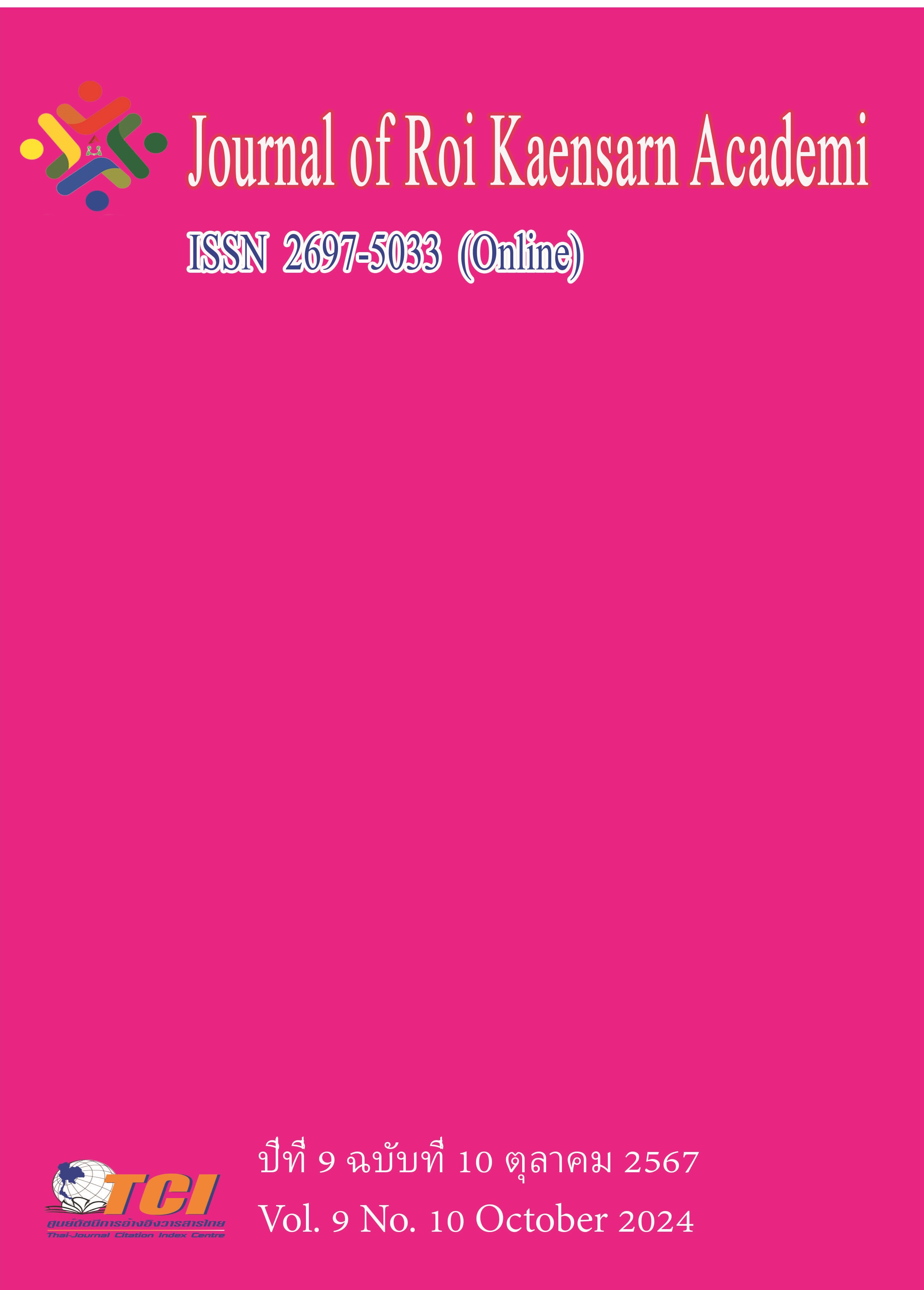Enhancing Reading Comprehension in Chinese EFL Learners: The Interplay of Vocabulary Size, Discourse Analysis, and Digital Reading Medium
Main Article Content
บทคัดย่อ
Background: This research aims to examine the correlations among vocabulary size, discourse analysis, digital reading platforms, and reading comprehension in EFL learners within the context of Chinese higher education.
Aims: (1) Investigate the relationships among vocabulary size, discourse analysis, the use of digital reading mediums, and reading comprehension among EFL learners. (2) Determine the predictive power of discourse analysis, reading medium, and vocabulary size on reading comprehension through multiple linear regression analysis.
Methodology: The study involved a sample of 84 first-year English majors at Sichuan Minzu College, utilizing correlation and multiple regression analysis to evaluate the predictive impact of these parameters on students’ reading comprehension. Research instruments included standardized tests for vocabulary size, discourse analysis assessments, and questionnaires for evaluating digital reading platform engagement. Data collection was conducted through pretests and posttests over a 10-week period, followed by thorough statistical analysis.
Results: The research results found that a substantial positive association exists between learners' vocabulary size and their reading comprehension abilities, highlighting the critical role of vocabulary knowledge. Additionally, discourse analysis emerged as a vital component that enhances comprehension by focusing on linguistic structures and coherence. The incorporation of digital reading platforms, particularly Superstar E-learning, demonstrated beneficial impacts on comprehension through increased flexibility and engagement. Furthermore, a significant correlation between effective vocabulary learning strategies and vocabulary size was observed, emphasizing the importance of strategic vocabulary acquisition for improving reading comprehension.
Conclusion: These findings underscore the necessity for a comprehensive teaching strategy that integrates vocabulary enhancement, discourse analysis, and the use of digital resources to foster better reading comprehension in EFL contexts.
Article Details
เอกสารอ้างอิง
Alderson, J. (2000). Assessing reading. Cambridge University Press.
Anderson, R. C., & Freebody, P. (1981). Vocabulary knowledge. In I. T. Guthrie (Ed.), Comprehension and teaching: Research reviews (pp. 77-117). International Reading Association.
Bourdieu, P. (1997). Language and symbolic power. Polity in association with Basil Blackwell.
Cohen, J. (2013). Statistical power analysis for the behavioral sciences. Routledge.
Cook, G. (1992). The discourse of advertising. Routledge.
Dwiastuty, N., & Sulhan, M. (2018). The use of readutainment as e-learning to improve students’ reading comprehension skills. In MATEC Web of Conferences (Vol. 154, p. 03007). EDP Sciences. https://doi.org/10.1051/matecconf/201815403007
Ergun, E., & Adibatmaz, F. B. K. (2020). Exploring the predictive role of e-learning readiness and e-learning style on student engagement. Open Praxis, 12 (2), 175-189.
Garrison, D. R., & Kanuka, H. (2004). Blended learning: Uncovering its transformative potential in higher education. The Internet and Higher Education, 7 (2), 95-105.
Grabe, W. (2009). Reading in a second language: Moving from theory to practice. Ernst Klett Sprachen.
Gu, T. (2017). The effect of vocabulary knowledge on Chinese English learners’ reading comprehension. International Journal of English Linguistics, 7 (4), 45-55.
Harris, Z. (1952). Discourse analysis. Language, 28 (1), 1-30.
He, L. (2020). New requirements for university English teaching in the new era: Foundation and key points for the revision of guidelines for university English teaching. Journal of Foreign Languages, 2020 (4), 13-18.
Ibrahim, E. H. E., Sarudin, I., & Muhamad, A. J. (2016). The relationship between vocabulary size and reading comprehension of ESL learners. English Language Teaching, 9 (2), 116-123.
Kheirzadeh, S., & Tavakoli, E. (2012). The causes of reading difficulty: The perception of Iranian EFL postgraduate and undergraduate students. Journal of Language Teaching & Research, 3 (1).
Kirkwood, A., & Price, L. (2014). Technology-enhanced learning and teaching in higher education: What is ‘enhanced’ and how do we know? A critical literature review. Learning, Media and Technology, 39 (1), 6-36.
Kuhlemeier, H., & Hemker, B. (2007). The impact of computer use at home on students’ Internet skills. Computers & Education, 49 (2), 460-480.
Laufer, B. (1997). The lexical plight in second language reading: Words you don’t know, words you think you know, and words you can’t guess. In Second Language Vocabulary Acquisition: A Rationale for Pedagogy (pp. 20-34).
Li, C., & Sun, L. (2023). The current situation and optimizing ways of cultivating college students' English reading ability. Western Quality Education, 9 (9), 104-107.
Mayer, R. E. (2017). Using multimedia for e-learning. Journal of Computer Assisted Learning, 33 (5), 403-423.
Nation, I. (2006). How large a vocabulary is needed for reading and listening? Canadian Modern Language Review, 63 (1), 59-82.
Nikoopour, J., & Kazemi, A. (2014). Vocabulary learning through digitized and non-digitized flashcards delivery. Procedia - Social and Behavioral Sciences, 98, 1366-1373.
Perfetti, C. A., & Hart, L. (2002). The lexical quality hypothesis. In Precursors of Functional Literacy (pp. 67-86).
Shrestha, N. (2020). Detecting multicollinearity in regression analysis. American Journal of Applied Mathematics and Statistics, 8 (2), 39-42.

